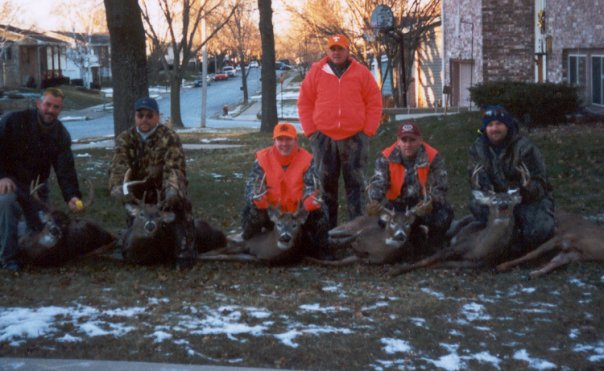
The average hunter is white, rural and male. His father hunted, and he likely hunts close to home. This description perfectly describes my husband, although he also tracks the mileage of his meals, knows more about local microbrew seasonals than field dressing a deer, and is married to a nutritional anthropologist. This weekend, for the first time ever, he’s joining his dad and uncles in Iowa’s early shotgun deer season. My husband is part of a slowly growing segment of the local food movement which has begun to explore hunting as part of the larger local food movement. As of yet however, this movement has been reticent to embrace hunting as an integral part of sustainable eating. Authors such as Michael Pollan have ventured into hunting to provide anecdotal examples in popular media, but the concept has been largely ignored elsewhere, most notably by anthropologists. A quick search of recent anthropological articles related to hunting supplies a multitude of articles related to Inuit groups, Amazonian small land holders, and indigenous Nicaraguan communities. However, anthropologists have provided virtually nothing related to the 12.5 million people who currently hunt in the United States (US Fish and Wildlife Service. 2006. National Survey of Fishing, Hunting, and Wildlife-Associated Recreation). In one of the few ethnographies of American hunting culture, Marc Boglioli highlights the traditional anthropological division between the ‘noble savage’ and the ‘ignoble Westerner’. Researchers and the public-at-large celebrate animist spirituality of indigenous hunting and traditional subsistence patterns in the ethnographic other, but run from the modern American hunting industry and “you might be a redneck if…..” jokes. (You might be a redneck if…..you’ve even been involved in a custody battle over a hunting dog.)
Despite the lack of anthropological interest in modern American deer hunting, it has the potential to be an important and powerful part of the local food movement and sustainable food systems. The white-tailed deer population in the United States was decimated by the beginning of the 20th century. In the intervening 110 years, this population has grown exponentially. According to the Iowa Department of Natural Resources, left unchecked, which it largely would be without hunters, deer populations can double about every three years. Human management of deer is essential to modern herds. More than 300,000 deer live in my home state of Iowa before one third are culled every hunting season. The vast food resources and essential ecological management provide important opportunities to address the pillars of the local food movement.
While deer hunting has been largely ignored by anthropologists and sustainable food system advocates, several interesting ventures do exist. These include Deer Hunting for Locavores, a class tailored to urbanites who grew up outside of traditional American hunting culture and who are searching for local food options. Another is the Bull Moose Hunting Society. This group aims to expose urban foodies to wild game food resources, reconnect urban eaters to nature and recenter hunting as an essential part of local sustainable food systems. Deer hunting is also an important contributor to local food security through venison donation programs, which exist in all 50 states as well as several areas in Canada. These programs provide existing hunters with the opportunity to hunt more and reduce waste. They can have a powerful impact on food security. For example, 1.1 million meals were donated through the Iowa DNR’s Help Us Stop Hunger (HUSH) program.
Within the local food movement, there is the need to explore the many logistical and cultural issues surrounding deer hunting. These include the cultural acceptability of venison as a food resource among food aid recipients, safety concerns of lead shot, and the cost and training required to hunt, as well as cultural constructions such as gender and ethnicity in relationship to hunting. Additionally, the cultural divide between traditional American hunters and the more cosmopolitan local food movement locavores is important to understand in order to combine the two in a sustainable marriage that highlights and celebrates both as valid cultural traditions worthy of anthropological inquiry. Maybe then my husband and I won’t have to answer our foodie friends’ inevitable questions, “he’s doing what?” and “are you OK with this?”